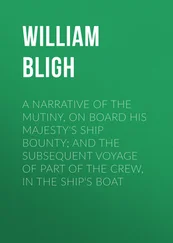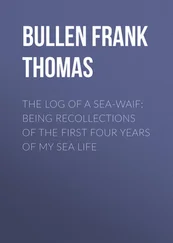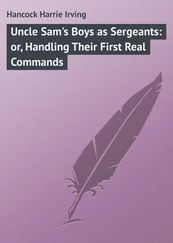Neither of them knew what it would be used for, but muttered under their breath that the Russians may be calculating the benefit of keeping it for themselves. When Riches handed over the completed – and barely legible – manifest, the customs official began making an announcement. Riches found himself staring incredulously as the interpreter finished the translation. If the team left anything behind on Russian soil once they had finished their business, he said, they would be fined based on the value of the items.
As the customs officer laboriously went through the manifest ticking off the items one by one, Riches called Neil Hopkins, one of his team at Abbey Wood, for an update. It was two thirty in the morning and he answered with a bleary voice, but he was up to date. Nothing much had changed: the submersible had not been rescued, and wildly different estimates of remaining air aboard AS-28 continued to pour out of various parts of the Russian military machine. Finally, he confirmed that the US Rescue Team were on their way and due in at about 20.15 local time, nearly two hours behind them.
While Riches was struggling with the customs officials, the load masters had been anxiously scanning the airfield apron around the airport looking for the lifting equipment they’d been promised by the Russians. To get Scorpio, its umbilical reel and the control cabin out of the C17 they needed a K-loader – a heavyweight version of the Atlas loaders that carry cargo containers at commercial airports. Designed as a flat bed covered with rollers whose height can be precisely adjusted, the K-loader could take the heavy equipment straight from the back of the C17’s cargo hold. Without one there was no easy way to unload without risking severe damage.
All they could see on the apron was one small crane, five flatbed trucks and a forklift. The crane was no good – the plane’s fuselage would prevent it from being able to reach anything inside. James Fisher Rumic kept a database of airports and airstrips with details of what equipment was available where, but in Russia the true state of facilities was hard to ascertain. Russian military transport aircraft like the Antanov 124 come equipped with an internal crane and gantry so that cargo can be offloaded at remote airfields with limited ground-based assistance. With a 1.5-metre drop between the back of the C17’s cargo bay and the concrete below, that suddenly seemed like a very good idea.
By 19.00 local time customs had finally been cleared, but there was still no sign of progress on finding a K-loader. Captain Holloway interrogated the ground crew, who shrugged. They had no K-loaders. There were Atlas-loaders over on the commercial side of the airport, but they are rated to less than a ton and would have collapsed under the weight of the containers. They claimed there was one around four hours away and it might be possible to send it up, but Holloway was doubtful that anything so far off could be achieved so quickly.
Rather than wait doing nothing, Gold suggested making a start by unloading Scorpio. It was closest to the back door and since it weighed only one and a quarter tons, the forklift should be able to get it out. It seemed a good idea, so the loadmasters slid it to the lip of the back door while Gold and the interpreter arranged for the forklift to receive it.
The yellow-and-red forklift was moved into place, its wheels were chocked, and the arms clattered upwards. Gold’s face was taut. As the pallet bearing Scorpio was rolled backwards and on to the arms, the forklift began sagging forwards. Then, just as it seemed to be holding the load, one of the side windows popped out and smashed on the concrete below. The Rumic crew all jumped in shock, but the Russians hardly blinked and Scorpio remained in the air. The drama over, the ROV was slowly lowered to the ground with a juddering motion and then moved close to the crane.
But as fast as they’d started, they stopped. There was nothing more they could do without a K-loader. The loadmasters – their pride at stake – began working up a plan to offload the containers straight on to the flatbed trucks using an improvised system of ropes and pulleys. Riches was in no doubt they’d get every thing out, but any damage to the equipment and the mission would be over. Squadron Leader Hewitt also had reservations: if the cargo door of his plane got damaged they might be stranded in Petropavlovsk until spares arrived, and that might take a very long time.
They’d flown 5,000 miles only to find that they couldn’t unload their equipment. Riches had told his superiors – and the press – that they could pull this off, but their timeline relied on the assumption that they could get hold of the equipment they needed. But they couldn’t and now they were stuck.
Riches called Neil Hopkins again, looking for any solutions to the problem. That’s when he was told that while he’d been in the air the US Navy had escalated its response. It had four aircraft currently inbound. Alongside the enormous C5 with the main crew, one C17 with two Atmospheric Diving Suits had been launched from Phoenix, Arizona, while another had been despatched from Andrews Air Force Base outside Washington DC carrying a Deep Drone ROV and a generator in case of electrical issues. Both of these C17s were still several hours away from arrival.
Crucially, the US Navy had also discovered from a Russian aeronautical company that there was no equipment at Petropavlovsk airport that would be able to handle their containers, so they’d sent yet another C17 from Osaka, Japan, carrying the K-loader they needed so badly. This last C17 was only 20 minutes or so behind the C5 from San Diego.
The huge scale of the US response was impressive. The true significance of the rescue as a diplomatic mission was becoming clear. On the Russian side, they were evidently so desperate to avoid the political fallout from another underwater tragedy that they were willing to hand their oldest foes the chance of the glory of rescuing their own men, in their own waters.
All the team’s hopes were now pinned on the imminent arrival of the US aircraft. If Riches could persuade their commanders to let his team use the US K-loader first, the head start might still be used to good effect.
Saturday, 6 August
SS + 51 h 32 mins
08.02 UK – 11.02 Moscow – 20.02 Kamchatka
Petropavlosk-Kamchatsky
Even though he knew Russia well, a part of Captain Holloway was still reeling from the fact that he’d flown for nine hours through the night, across nine time zones, and still remained within the borders of the motherland. A larger part of him was worrying about the lack of a K-loader, for it was he who’d transmitted the requests to Vice-Admiral Avdoshin at the Russian MoD to have one present.
With the promise of salvation in the imminent arrival of the American team, Holloway began trying to think ahead to the next phase. He tracked down the senior Russian officer and arranged to take an advance party down to the ship to which they’d been assigned. He took Pete Nuttall and Marcus Cave, leaving the rest of the team milling about the plane, waiting.
Pete Nuttall stepped into the Russian saloon car to join Captain Holloway and Marcus Cave to head down to the port just as the long twilight was settling in. At 53 degrees North in August, there would be only four hours of darkness. The vehicle was rusting and its upholstery threadbare.
It took a little while for the tinny-sounding car to pick up speed. Every seam in the airstrip concrete made the car judder thanks to its knackered suspension, but Nuttall was just relieved to be leaving the plane and to get moving. He wanted to get his teeth into a part of the operation where he could actually do something. How Scorpio was going to be unloaded was not his problem. He needed to make sure that Scorpio could do the job when they got out to site.
Читать дальше












